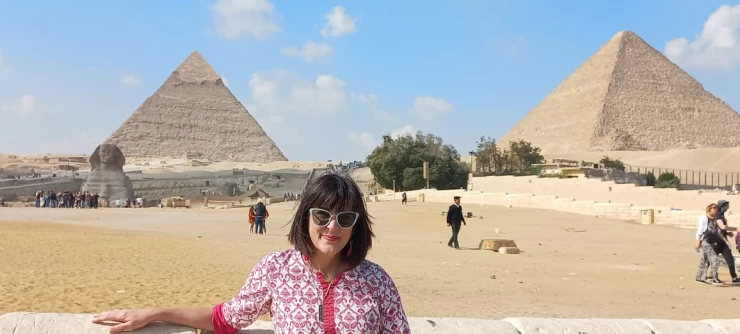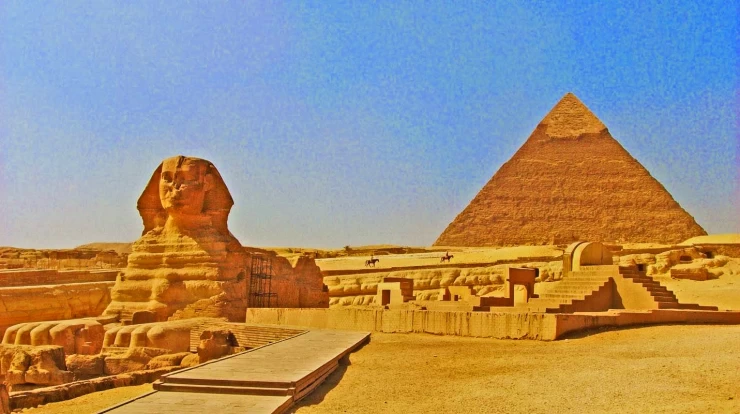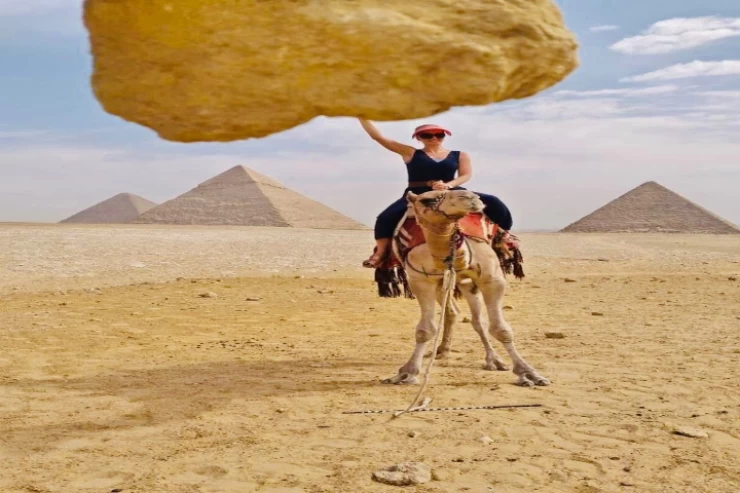You will visit Al-Rifai Mosque after being transferred from Cairo Airport by our representatives. It was commissioned to be built by Khushiyar Hanem, the mother of Khedive Ismail, who wanted to build a mosque with burial grounds for her and her family. Construction took forty-three years, with construction beginning in 1268 AH and ending in 1329 AH. Construction of the mosque stalled for about 25 years, until the reign of Khedive Abbas Hilmi II, who commissioned engineer Hertz Pasha to complete construction in 1905. It was inaugurated in 1912.
You will then be transferred to the Sultan Hassan Mosque.
The mosque was originally built on a plot of land known as “Souq Al Khail” in Al Ramila Square, the area currently located in Salah El Din and Sayyida Aisha Square. Sultan Al Nasser Muhammad bin Qalawun had built a huge palace on it for one of his close princes, the Mamluk prince Yalbugha Al Yahyawi, who held the position of the Sultan’s deputy in the Levant. However, the palace was demolished when Sultan Hassan decided to build the mosque in 1356 AD.
It is one of the most beautiful buildings in Cairo and Islam, and deserves to be in the first place in Arab architecture thanks to its high dome, the height of its minaret, its great spaciousness, its magnificence and the abundance of its decorations,” and the Moroccan traveler described it.
You will be taken to the Pyramids Necropolis following lunch. It is among the oldest cemeteries in Egypt, and although the burials there are not the oldest overall, they are regarded as the most exquisite. The ancient Egyptians regarded the Giza Necropolis, also called the Memphis Necropolis, as a hallowed site where monarchs and gods were interred. Since the Fourth Dynasty, and possibly even earlier, the Giza Necropolis has obviously piqued the interest of the ancient Egyptians. Furthermore, because Giza was far from residential regions, the ancient Egyptians were interested in burying their dead there. Furthermore, it was a desert, difficult to live in, and because it was far from grave robbers, who were accustomed to grave robberies, considered the most heinous crimes by the ancient Egyptians.


























